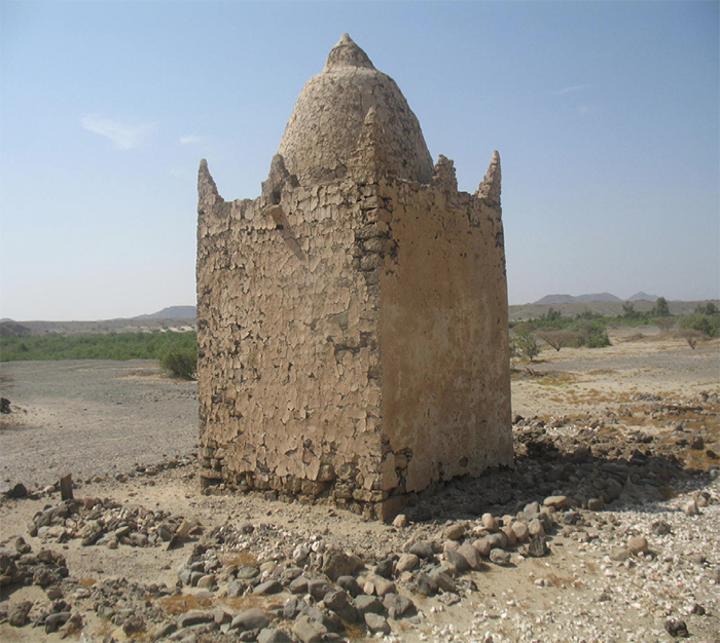Africa-Press – Eritrea. The Red Sea of Eritrea was the gateway for the introduction of Christian and Islamic traditions into Africa apart from providing corridors to interregional exchanges and trade networks. Evidence of this phenomenon is visible along the coast and elsewhere in the country with indications of early Christian churches and the bulk of remains dating from Islamic periods in the Dahlak islands. The first millennium A.D. saw the emergence of two monotheistic religions, Christianity and Islam, which extended their influence over the territories bordering the Red Sea. The Medieval Period in Eritrea, as concerns the cultural heritage, exhibits vestiges of Christian and Islamic traditions in as much as the historical and cultural processes associated with them. Delimited between the introduction of the monotheistic religions into Eritrea and the 15th century, the period provides an interface to understand socio-cultural transformations and processes that culminated subsequent to the introduction of Christianity and Islam respectively.
Christianity was introduced by the 4th century A.D. into this part of the Horn with the enterprise of Frumentius, a Christian monk from Tyre in Syria. The highlands of Eritrea were the locations for the earliest Christian communities in the Horn of Africa. Eritrea is indeed a country among the first to accept monastic life. Monastic communities and traditions provide insights into early Christian eras, including those found in and around the Christian sanctuaries. Local traditions credit the foundation of monasteries to missionaries from the Near East during the late 5th or early 6th centuries A.D. Many of the oldest monasteries found in Eritrea have been the centers for pilgrimage and Christian religious education. Monasteries in Eritrea are, thus, the custodians of irreplaceable Christian art, liturgical treasure, cultural traditions, and spiritual as well as religious practices protected upon hills and cliffs. Manuscripts from several monasteries in Eritrea as well as ecclesiastical buildings, for instance, are associated with earlier traditions of the Christian civilization in this part of the Horn. The full‐fledged development of the Ge’ez script and the height of Ge’ez literature features the Christian civilization in Eritrea and elsewhere in the Horn.
Many monasteries and churches of this period also incorporate ancient architectural elements and contain artifacts dating to the 1st millennium A.D. cultural landscape. The mix of ancient local architectural features with intricate geometric edifices symbolizing Christian motifs typically represent medieval architecture in this part of the Horn. Religious connotations are interwoven with architectural styles of the period in as much as incorporating inevitable influences. Remarkable styles adorn the medieval churches and monasteries in Eritrea together with iconography and wall paintings. Examples of such architectural ensembles are provided from the medieval church of Kidane Mehret Church in Senafe, Baraknha, Bihat, etc. The combination of artistic beauty and utility, therefore, partly offers a glimpse into the scale of socio-cultural transformation and continuities pertaining to medieval Eritrea.
Moreover, some of the earliest monasteries housed mummies among their cultural patrimony owing to the contribution of the Christian civilization. Mummies have been found in several places such as Debre Hawaryat of Ham, Metera, Bara’knaha, Bek’ar, etc mainly in southern Eritrea. While the exact timing for the practice and introduction of mummification in Eritrea remains virtually unclear, the association of mummified skeletal remains to saints that inhabited old monasteries begs a better understanding. The practice, however, has been according to oral traditions related to the coming of the nine saints to Eritrea via Alexandria around the 6th century A.D. Further research and the inevitable dating of mummified remains can reveal the intent behind the mummification process and its exact timing, possibly confirming or refuting the Pre-Christian roots of the practice. Monasteries throughout the country in general have, therefore, preserved patrimonies and historical narratives of the medieval period further contributing to the religious identities sealed for centuries.
Similarly, evidence related to the introduction of Islam by the 7th century A.D. into Eritrea is widespread along the Coast. In the early 7th century, some of the followers of Prophet Mohammad fled the persecution at the hands of the rulers of Mecca and came to the African Red Sea Coast in Eritrea. This is considered the first Hejirra and the first followers of Prophet Mohammad (referred to as Sahaba) must have passed through the Dahlak islands. The Sahaba shrine, found in the port city of Massawa, is the first religious shrine where the first Moslems stepped and landed their foot on this side of the Red Sea. This was when Prophet Mohammed started to awaken Arabs to believe in Islam, which focused on a spirit that is against inequality and polytheism. Evidence for the Sahaba migration into Eritrea and other kingdoms in the hinterland in the Horn evince the first introduction of Islam in our region via a peaceful process and the Sahaba shrine indicates the earliest Islamic religious structure in Africa erected while the religion was in its infancy, 14 centuries ago.
The Dahlak islands also store a rich heritage of Islamic civilization in Eritrea with an array of necropolis, Kufic inscriptions (classical Arabic), and remains of dome-shaped mosques attributed to sultanates in the archipelago. The rich Islamic heritage found in the Dahlak islands demonstrate the range of historical events in the medieval period in Eritrea and the culmination of Islamic civilization in this part of the Horn.
Moreover, many precious and rare old mosques that date back to 1100 – 500 years ago are found in the precinct of the port city of Massawa and depict the variety of Islamic architecture present in Eritrea. Owing to the legacy of medieval events, the port city of Massawa has maintained intimate links with the Islamic world and the holy centers of Islam in Arabia to embrace rich Islamic heritage in its public and private buildings. The nature and variety of Islamic architecture in Eritrea is indeed an indication that ancient Eritrea marks one of the earliest Islamic civilizations on the African continent and perhaps in the world. A glimpse into the rich Islamic heritage in the Dahlak islands and the port city of Massawa will feature in the subsequent editions of this column.
Finally, evidence of medieval tombs associated with famous sheiks is widespread across northern Eritrea in areas such as Kubkub and Gadem Haleb. The integration of Sufist traditions in these tombs as a matter of fact is an indication of the credence of doctrine over ordinary life and indicate the embedding of local philosophy of life in the religious beliefs of the local communities.
In summary, medieval Eritrea provides an outlook into the interplay of Christian and Islamic traditions inherent to the monotheistic religions of the country and the culmination of these traditions has helped shape the co-existence and peaceful harmony of traditions over millennia to create the modern state.
For More News And Analysis About Eritrea Follow Africa-Press







